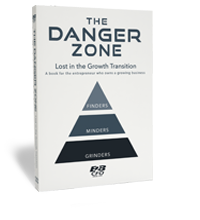Now that we’re coming out of a recession, everyone’s business seems to feel pinched and contorted. Money is flowing again, but in odd ways.
According to Mark Derr, most businesses have gone too crazy cutting expenses – and they’ve cut the very infrastructure that was making them money in the first place. Mark, who works out of Scottsdale, has seen this countless times as a consultant with B2B CFO, which acts as a chief financial officer to all sizes of business. He says that the bean counters in these businesses — sometimes even the founder — got caught up in cost-cutting without taking a strategic approach. Good investments in profitability got tossed out alongside the garbage in a full-scale war on expenses.
“When you’re a numbers person, you’re looking at expenses,” Derr explains. “But the reality is it all starts at the top line: revenue. If you ignore the business development, marketing and sales, then your business is going to fail.”
You can’t cut your way to profitability.
Derr says that all businesses go through what his company founder, Jerry Mills, calls the “Danger Zone.” Companies bootstrap their way to initial success, but that infrastructure begins to wear with the increased demand. By infrastructure, Derr is referring to your business development and marketing staff, your HR team and physical items such as equipment or computer systems. To alleviate the burden, the company starts to spend money on infrastructure, but it quickly begins to run out of cash because it isn’t profitable enough.
“It’s not surprising to hear a business owner say, “I don’t know where I’m going to get the cash to make payroll,” says Derr.
In reaction, the founder and CEO – the guy who is supposed to be the visionary and chief rainmaker – goes back to bootstrapping and supporting the infrastructure. With the leader distracted, the company has taken its focus off growth and revenue begins to drop.
Derr says most of these business owners are quite successful. All they need is a strategic plan to maximize profitability and possibly some creative financing to get them through the growth spurt. Mark explains that the recession has caused many CEOs to obsess on certain areas of their business while ignoring core areas that were key to their original success, or which have better profit margins. By creating a holistic financial review of the company, Mark helps businesses re-center their focus on maximum profitability.
The bottom line is that businesses that have cut their biz dev, marketing and sales teams aren’t bringing in the customers they used to. How could they when there’s no one to make rain?
It’s time to re-center and re-build.



